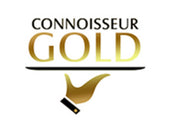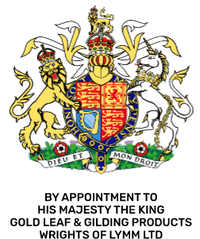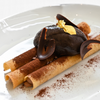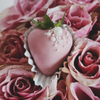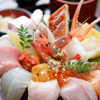World Food Safety Day: Ensuring Quality in Luxury Ingredients like Edible Gold Leaf
- by sam@wrightsoflymm.co.uk User
Every year on June 7th, the world comes together to recognize World Food Safety Day, a global initiative led by the World Health Organization (WHO) and the Food and Agriculture Organization (FAO). This day is dedicated to raising awareness about food safety and encouraging actions that prevent, detect, and manage foodborne risks. As consumers become more adventurous and indulgent in their culinary experiences, even luxury ingredients like edible gold leaf and edible gold flakes have entered the mainstream. But how do such extravagant elements fit into the broader conversation about food safety?
When we think of food safety, we typically think of basic hygiene, proper cooking temperatures, or avoiding contamination. However, with the rise of gourmet trends—such as gold-covered chocolates, cocktails rimmed with shimmering flakes, and even gold-adorned sushi—ensuring the safety of luxury ingredients has become just as important. That’s where World Food Safety Day serves as a timely reminder that even beauty must be backed by safety.
What Is Edible Gold Leaf?
Edible gold leaf is a type of gold that is safe for human consumption. It is made from pure gold, usually of 23 carats (23ct) or higher, sometimes blended slightly with silver for flexibility. When labelled specifically for food use, these ultra-thin sheets or flakes are produced under strict sanitary conditions to meet health and safety standards.
Only gold of 23-24 carats is considered safe to consume because lower carat gold may contain harmful metals like copper or nickel. 23ct edible gold flakes are among the most popular in culinary arts due to their purity and brilliant sheen. They add an eye-catching, luxurious touch to pastries, fine chocolates, liqueurs, and even savoury dishes.
Why Food Safety Matters—Even for Gold
Although edible gold does not react chemically in the body and passes through the digestive system without being absorbed, its safety still relies on the conditions under which it is processed and packaged. Poor manufacturing or storage conditions can introduce contaminants that turn this luxury ingredient into a health risk.
This is where the mission of World Food Safety Day becomes particularly relevant. It reminds manufacturers, restaurants, and consumers alike to prioritize safe sourcing, handling, and certification of all food products—yes, even gold.
Tips for Using Edible Gold Safely
If you’re planning to use edible gold leaf or flakes in your next culinary masterpiece, consider the following tips to ensure food safety:
-
Verify Purity: Only use gold labelled as 23ct or higher. This ensures it is free from toxic metals and safe to eat.
-
Buy from Reputable Sources: Always purchase from certified suppliers who adhere to food-grade production standards.
-
Check for Certification: Look for gold products that come with safety certifications or food-grade labelling.
E175 and E174 are European Union food additive codes used to classify edible metals commonly used for decoration in food.
-
Use Hygienic Tools: Always handle gold with clean, dry tools like tweezers or brushes to avoid contamination.
Luxury Meets Responsibility
The use of edible gold flakes is not just about adding luxury to a dish—it’s also about responsibility. As food trends evolve and new ingredients enter the market, the need for consumer education grows. World Food Safety Day is a powerful opportunity to highlight that even the most glamorous ingredients require thoughtful handling and regulation.
In celebrating culinary creativity, let’s also uphold the highest standards of hygiene and quality. Whether you’re a home cook experimenting with 23 carat edible gold leaf, or a chef plating a showstopping dessert, food safety should always be at the heart of your craft.
So, on this World Food Safety Day, let's raise awareness not only about basic hygiene but also about the safe use of high-end ingredients. Because when it comes to food—luxury or not—safety always comes first.
